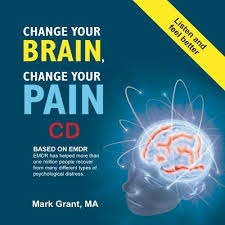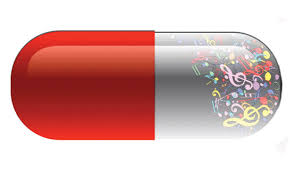Pain relief with a pain relieving nature-MUSIC.
The improvement of physical wellbeing through music isn’t only about perceived pain relief. Studies show that playing music for patients before, during, and after medical procedures can help lower blood pressure, reduce anxiety and stress, ease muscle tension, and more. At the Chronic Pain Care Center at the Rehabilitation Institute of Chicago, music therapy is part of the array of techniques that patients learn to help control their pain, according to osteopathic physician Steven Stanos, medical director of the center. As Stanos sees it, there is no reason not to take time to listen to music. “What we’ve learned from our pain patients is that any intervention that can be distracting, relaxing, and enjoyable — whether it’s music or another therapy — can decrease the experience of pain,” Stanos says.
Listening to a song can have a real effect on various parts of the brain, with studies showing that areas responsible for aspects, such as memory and vision, can ‘light up’ in response to music.
‘There’s a very wide range of reactions in the body and mind to music, and brain imaging studies have shown that various parts of the brain may be activated by a piece of music,’ says Dr Victoria Williamson, lecturer in psychology at Goldsmith’s College, London.
Recommended
‘For example, a recent study in Canada showed that there’s a real causal relationship between music and the reward system, a core part of the brain that reacts to stimuli, which are good for us – food, light, sex for example – and reinforces these behaviors meaning that we do them more.’
Researchers at McGill University in Montreal showed that listening to pleasurable music of any description induced ‘musical chills’, which triggered the release of the feel-good chemical dopamine.
Music so impacting to our brain that music is even considered having a pain-relieving nature, scientists are exploring how the brain processes music during pain. Look at when we go to the doctor or better the dentist. More are less out to go to the dentist as opposed to the MD since a doctor’s visit doesn’t include the day of the visit or soon later a drill going in out mouth to take care of a cavity or worse Root Canal Surgery, you get the picture. Remember when you have or if you still do regularly go to the dentist there is always soft music in the background. This is because it calms the body through how the brain reacts to soft music as opposed to hard rough music.
When the body encounters something painful — you step on a tack or having a drill applied to a cavity with no novacaine if allergic or the patient just refuses the medication, for instance — electrochemical signals travel from the site of the injury to the spinal cord and on to the brain. There, several brain regions work together to process pain signals — ultimately resulting in the conscious experience of, “Ow, that hurts!” In contrast, brain scans reveal that listening to pleasing music increases activity in parts of the brain’s reward center.
“Pleasant music triggers the release of the brain chemical dopamine,” explains Robert Zatorre, of McGill University, who studies emotion and music. This change “is strongly associated with other rewarding and motivating stimuli, such as food, sex, and certain addictive drugs,” Zatorre adds. Scientists believe that music’s ability to make you feel good may be one way it helps to alleviate pain.
PLEASING TUNES = RELIEVING PAIN
Studies also suggest that how good a song makes you feel affects your perception of pain. Although musical taste is subjective, there are common features of music that evoke fairly universal responses. For instance, most people find musical consonance (harmonies or chords) to be pleasant and dissonance (clashing notes) to be unpleasant.
When scientists asked study volunteers to evaluate pain while they listened to different types of music, researchers found that people who listened to excerpts of music judged by most to be pleasant (such as the Romantic music piece “The Blue Danube Waltz”) reported less pain than those who listened to unpleasant music (such as Steve Reich’s modern classical piece “Pendulum Music”). The more pleasing the listeners found the music to be, the less pain they felt.
Other studies suggest that music can interfere with pain signals even before they reach the brain — at the level of the spinal cord. In these studies, scientists examine how different types of music change the withdrawal reflex: an involuntary organized entirely in the spinal cord.
In one study, scientists measured how forcefully volunteers withdrew their feet after being mildly electrically zapped on an ankle as they listened to music. Compared with pleasant music, unpleasant music resulted in stronger leg reflexes and greater reports of pain.
Psychologist Mathieu Roy, of the University of Colorado, Boulder, who conducted the study, says these results suggest that music can prevent the transmission of pain signals from the spinal cord to the brain.


